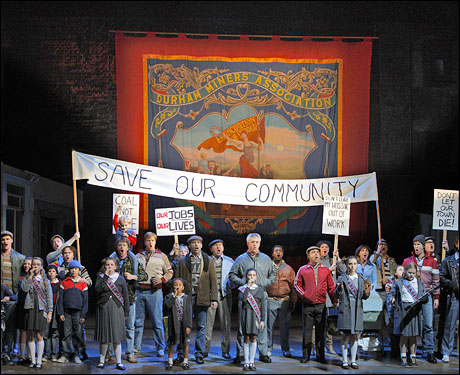For today, I want to take eight minutes of your time that you might normally spend reading this site for watching and listening. Go to this video of the flamenco singer Rocío Márquez Límon performing a minera in a striking coal mine on July 5 this year. (Thanks to Matthew Bain for posting this on Facebook, where I saw it). Ignore the ad at the front of the piece.
The miners had been underground for 45 days at this point. The austerity regime of conservative prime minister Rajoy has withdrawn all financial subsidy from the mines in Asturia and Leon. As a result, the coal will become unprofitable and the mines will close, putting thousands out of work. They have walked from their homes 250 miles to Madrid to protest to be greeted with riot police. Over 100,000 people assembled in Madrid this week in further protest at yet more cuts demanded by the “markets” otherwise known as Germany.
If you’re my age, from where I come from, you’ve seen this before with the British miners’ strike of 1984-85, which brought the world the delights of Billy Elliot. In the real world, people lost their jobs, communities were devastated and, just as she intended, Mrs Thatcher consolidated her neo-liberal regime. Let’s hope it doesn’t turn out that way this time.
OK, now really do watch the video. Watch the way the singer’s performance changes the faces of the strikers from defeat through grief to a renewed engagement. The faces are extraordinary, reminiscent of Ribera or other Spanish painters of the period–which is to say, one of the few moments in Western art when the faces of actual people could appear in representation.
The trace of Arab culture is audible in flamenco, five hundred years after the Reconquista, in the melisma that echoes the quarter tones of Arabic music. In recent years, this evocative sound has been reduced to an audible cliché by its compulsive overuse in pop music of the American Idol variety. There it speaks to the simulacrum of emotion, the unreal reality of Reality TV that is increasingly indistinguishable from mainstream political and cultural discourse.
It’s not that Límon has access to a “real real” that media can’t depict because we are, after all, watching it on video made available by El Pais, a major Spanish newspaper. My point is that the minera is a song form about the hardship of the mining life that is able to create a connection between these people based on common experience that has history behind it and a sense of purpose other than the circulation of commodities. You might find all these qualifications a bit tiresome and academic but the market has so capitalized even the expression of human emotion that they are, I think needed, at least in words.
But if you watched and listened you already know what I mean.


